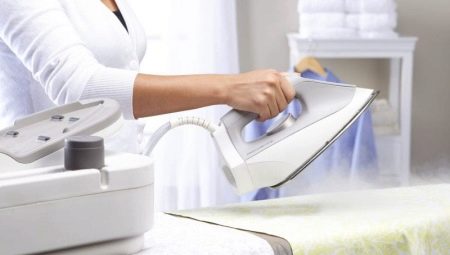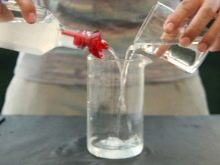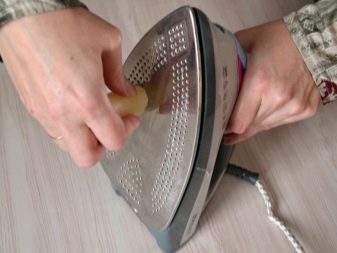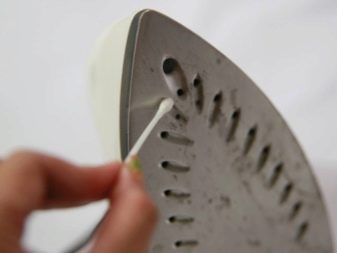How do I clean my steam generator and steam cleaner?

The steam generator is a useful invention and helps to keep things in perfect condition. With its help, you can not only iron clothes, but also take care of hard surfaces, removing old stains from them and carrying out disinfection. However, the appliance itself needs regular descaling, which forms both inside and outside the steam cleaner.
Why do you need cleaning?
During the operation of the steam station, the thin channels through which the steam passes are clogged with lime deposits, which are formed from the salts present in the tap water. Limescale causes a number of inconveniences, such as difficult passage of steam jets and the appearance of dirty smudges and lime flakes on the laundry. This causes the need to rewash things, and in the case of the formation of yellow spots, it completely renders the thing unusable. Many models of steam generators are equipped with a self-cleaning function, but when using poor quality water, the system is not able to cope with scale on its own, and requires outside help.
In addition to the appearance of stains and rusty smudges, the need to clean the device is indicated by extraneous sounds heard during steam generation, uneven steam supply and the presence of lime fragments on the surface to be steamed.



Features of the self-cleaning function
The steam generator self-cleaning option is found on more expensive models and helps to protect the device from scale and deposits. There are 3 types of self-cleaning systems - Anti calc, Self clean and Calc clean. The principle of operation of the first is based on the action of an anti-lime rod installed on a steam switch and retaining calcium and magnesium salts.Periodically, the rod is removed from the device, placed for 20 minutes in a solution prepared from 200 ml of water, 1 tbsp. l. vinegar and 1 tsp. citric acid, then washed under running water and put in place.
Self clean and Calc clean systems are equipped with a special filter, which is also periodically removed from the device, immersed in a vinegar solution for 30-40 minutes, and then rinsed. To start the self-cleaning process, filtered or distilled water is poured into the reservoir of the steam generator, the switch is set to maximum heating and the device is turned on. After the water has heated up, the device is held over the sink in a horizontal position, while pressing the self-cleaning button.



Together with water and steam, dirt and scale accumulated on the inner walls of the tank come out intensively from the holes. For better cleaning, the procedure is repeated twice.
Some models, instead of a filter, are equipped with special replaceable cartridges, which are replaced with new ones as they become dirty. More modern steam cleaners are equipped with a dedicated De-Calc indicator light to indicate that the appliance needs cleaning. Such models are able not only to give a signal, but also to turn off the power supply if the tank is excessively dirty. After cleaning the device from limescale, the protection is disabled and the power supply is restored. The self-cleaning system greatly facilitates the maintenance of the device and extends its service life.



Types of funds
For descaling steam generators, there are many different products, the most famous of which is "Anti-scale". It comes in the form of tablets, powder or gel and helps to quickly remove limescale from the tank walls. The required amount of the product is dissolved in distilled water in proportion according to the attached instructions, poured into the container of a steam cleaner and left for 30 minutes. Then the device is connected to the network, and the switch is set to the most powerful steam supply mode. Then the unnecessary cloth is ironed until the liquid has completely evaporated, after which the tank is rinsed with clean water.
Good results are obtained using products such as Topperr, Cillit, Top House and Optima Plus, with the help of which you can quickly and absolutely safely remove scale, salt deposits and limescale from the walls of the tank. In addition, regular use of these drugs protects the tank from the appearance of mold and greenery, eliminates unpleasant odors that may appear from poor-quality tap water.




Traditional methods
You can use folk remedies to descale your iron or steam generator at home. Such compositions are available in any home and they cope with the removal of limescale as well as chemical preparations.
Lemon acid
To remove salt deposits from the walls of the container, use a solution prepared from 250 ml of hot water and 25 g of citric acid (1 tsp). The resulting product is poured into a reservoir and left for 25 minutes. Then turn on the steam supply mode and iron the cotton cloth until the tank is completely empty. Then clean water is poured into the device, kept for 15 minutes and poured into the sink.

Vinegar
If the holes in the steam generator are clogged with limescale, you can fix the problem with 9% vinegar. To do this, it is mixed with water in equal parts, then the tank is filled with the resulting solution by 1/4 of the total volume. After 20 minutes the appliance is turned on at full power and the unnecessary fabric is ironed with steam. This method is effective not only for cleaning the tank, but also for cleaning the soleplate of the iron.
The only drawback of the vinegar treatment is the pungent smell that accompanies the process of steaming the material. In addition, the use of vinegar is not recommended too often due to the negative effect of acid on the rubber and plastic parts of the steam generator.


Mineral water
This method is the most harmless for the parts of the device and can be used regularly. Mineral water is poured into the boiler, turned on at full power and the fabric is steamed until the water in the tank completely evaporates. The procedure is repeated 2-3 times, depending on the degree of contamination of the device, after which it is washed with clean water and wiped dry with a clean cloth.
Steam bath
This method is used to descale the holes on the iron bed. To do this, take a deep pallet and two 2 cm thick bars, which are placed at the bottom of the pallet. Put the iron on top with the sole down, pour the cleaning liquid into the tray so that the sole of the device is in water. Then put the pan on the fire, wait for the solution to boil, then boil for 5 minutes. The boiling composition helps to clean the holes in the soleplate of the iron and get out of them rusty flakes... Next, the sole is washed with warm water and wiped dry.
If a vinegar mixture is used as a cleaning solution, it is recommended to open the window.

How do I clean the sole?
There are several ways to clean the soleplate of an iron. The choice of the most optimal method depends on the degree of contamination and the material of the surface. So, for a Teflon coating, laundry soap is well suited, with which the heated sole is rubbed, after which the resulting layer is removed along with sootm. Instead of soap, you can use dishwashing detergent, which is applied to a sponge, then wipe the heated sole with it. In this case, all actions to clean the sole should be carried out only after disconnecting the iron from the network.
Appliances with normal stainless surfaces can be cleaned well with salt and paraffin. To do this, the paraffin is thoroughly crushed, mixed with fine salt and sprinkled on a white sheet. The iron is heated, then iron the sheet until the mixture completely covers the sole of the iron. Then the device is disconnected from the mains, and after complete cooling, the sole is wiped with a soft cloth.


A mixture of vinegar, water, baking soda and toothpaste has a good effect. The soles of the iron are treated with the resulting composition, after which they are wiped dry with a clean cloth. If it is necessary to wipe off burnt synthetics, then use acetone, while not forgetting to open the window. Small point stains on ceramic soles can be removed well with cotton swabs dipped in hydrogen peroxide.
To clean non-stick coatings, you can use a 1: 10 mixture of ammonia and water.


Prevention measures
In order for the steam generator to last as long as possible and to be less exposed to scale formation, it is recommended to follow a number of simple rules. For example, only filtered or melt water should be poured into the tank... Tap water contains a large amount of salts and impurities, therefore it is prohibited to use it unfiltered. Boiled water is also not suitable for steam cleaners, as it forms a precipitate during boiling. As for distilled water, it has too high a vaporization temperature, so it is far from the best option. Spring water contains a large amount of minerals and salts, which quickly turn into scale, and a special flavored liquid often leaves stains on clothes.
With regular use of the device, it should be cleaned at least 2 times a month., and after each use, be sure to drain the remaining water from the tank. It is not recommended to clean the steam cleaner with hard sponges and abrasive substances, as well as preparations containing hydrochloric acid.
If the steam cleaner is not planned to be used for some time, then it should be rinsed, wiped dry with a clean cloth, put in a box and stored at room temperature away from heating appliances.


For the cleaning method of the steam generator, see below.








